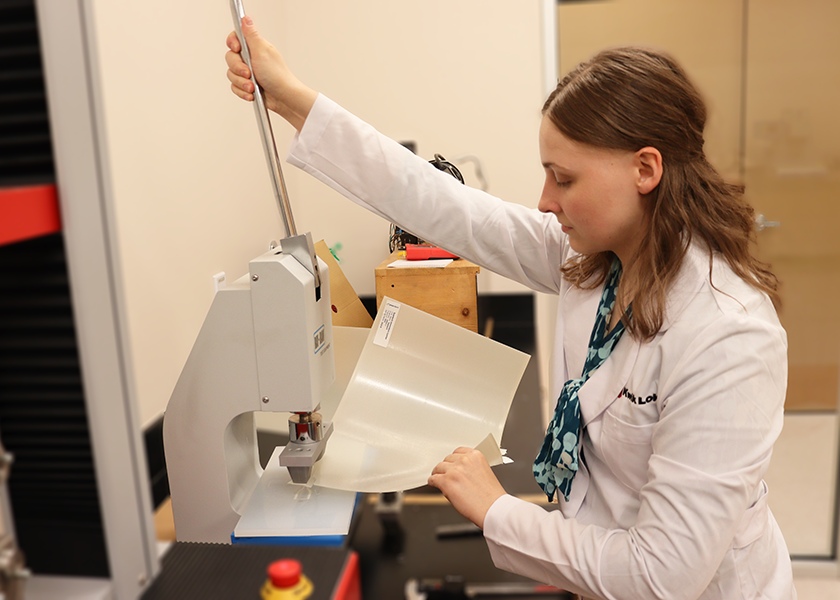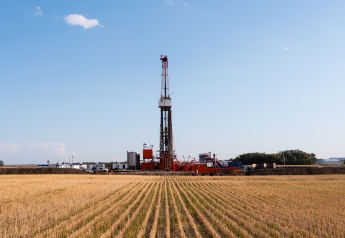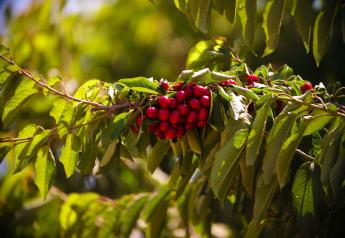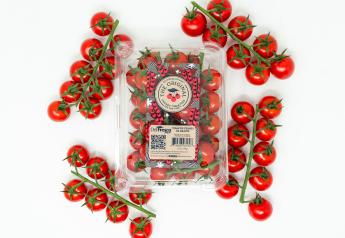Fruit and vegetable businesses share strategies for chasing lofty sustainability goals

“Sustainability is not a destination. It’s a path — a continuous improvement journey,” said Tamara Muruetagoiena, International Fresh Produce Association’s director of sustainability at the 2022 Global Produce & Floral Show.
While it’s easy to get swept away with the poetry and storytelling of how a farm or produce business makes the world a more just and verdant place, the devil is in the data when making environmental and social responsibility statements that have meaning and depth.
“Measurement is the most important thing in sustainability,” Muruetagoiena said. The adage that you can manage only what you measure is particularly salient when it comes to assessing sustainability.
Wherever the business fits in the fresh produce supply chain, sustainability efforts look different at various points the product life cycle — growing, harvesting, packing and shipping fresh produce from farm to plate. What constitutes a meaningful improvement for a California grape grower might not be relevant to a garlic importer, much less a distribution or packaging company.
Regardless, businesses of all kinds can chart a course and share the journey toward a more sustainable future with stakeholders and customers alike, armed with common sense, a data-driven approach and a little creativity.

Finding what to measure
The first step in telling a sustainability story is narrowing in aspirations and goals.
“At Kwik Lok, we’re a privately held, third-generation women-owned company,” Karen Reed, global director of marketing and communications, told The Packer. “We started by developing a corporate social responsibility committee on our board.”
One of the outcomes of the packaging closure and labeling manufacture company’s new CSR committee was to align with the United Nation’s Global Sustainable Development Goals Indicators, she said.
“Not all of [the reporting indicators] made sense to focus on for our business,” Reed continued. “We picked the ones that we wanted to focus on and those tended to be around materials and making products that leave less of an impact on the environment.”
What it came down to at Kwik Lok was focusing on innovating and developing sustainable packaging closures made from fiber materials that didn’t include problematic plastics in a new, Fibre-Lok product line. The packaging company also wanted to reduce the amount of fossil fuel-based resin and lessen its dependence greenhouse gasses to manufacture in its Eco-Lok line.
Similarly, Costa Rican-based tropical fruit producer Kapi Kapi Growers said its sustainability priorities are rooted in the U.N.’s sustainable development goals.
“Our vision and projects are guided by SDGs,” said Sofia Acon Ferrandino, director at Kapi Kapi Growers. “We’ve identified those that are material to us and work along those pillars.”
Evaluate the status quo
After identifying where it wanted to focus, Kwik Lok started evaluating the status quo in the organization in key focus areas.
“We began by coming up with a baseline. We looked under the hood at each of our plants. We sent a questionnaire out to everyone, getting them to answer and analyze where we are as a company,” Reed said. “Then, we worked on questions like, ‘Where do we want to be?’ and ‘What do we need to do to get there?’”
In addition to working with the U.N.’s sustainability pillars, certification is a key tool that sup-ports Kapi Kapi Growers set expectations across the operation, according to Acon.
“We have a great certification partner, Rainforest Alliance,” she said. “The [certifier] gives us a clear outline on which areas to focus and how to measure through the years. Those metrics along with our carbon neutrality [tracking] helps us create guidelines to measure continuous improvement.”
Related news: Florida citrus growers make advances with sustainable practices
Set meaningful milestones
Once an operation has a good idea of where they are beginning and where they want to eventually end up — the finish line — it’s helpful to set mile markers along the path to the destination or aspirational goal.
“It comes down to developing something that doesn’t just sound good, but actually is good,” said Kwik Lok’s sustainable product development manager, Viktoria Pakhnyuk, Ph.D. “It’s really each person being able to analyze their own situation case-by-case and make good judgment calls about what exactly they are measuring and if their goals are make sense.”
Not only do Kwik Lok’s new, more sustainable bag closure materials need to meet environmental requirements, but they also must work well to meet a customer’s needs with minimal hassle, Pakhnyuk said.
“You can measure different things and have almost conflicting information, but you still must choose what is more impactful or more important for the company,” she continued. “For instance, measuring carbon effects versus things like water or energy usage — they can go in different directions. It's not always a clear path. That's been the interesting and challenging part, but also a little surprising.”
For Julie DeJarnatt, director of retail strategy at Chelan Fresh, finding the right carbon footprint monitoring technology plays a big role in reporting climate-smart agricultural practices.
“We hope [our new monitoring technology] will bring a new level of transparency to our practices by providing us with actionable insights into our growing and land stewardship operations,” DeJarnatt said. “We strongly believe that this will help us make informed decisions about potential nature-based carbon removal projects down the road at Chelan Fresh.”
There are different areas of the business you can monitor. Kapi Kapi Growers focuses on different environmental and social responsibility pillars for every department.
The tropical fruit grower has already achieved its first major goal of verifying a 100% carbon neutral banana, and the grower is halfway to verifying a carbon neutral pineapple. In addition to environmental pillars, social responsibility is a big focus for Kapi Kapi, and country of origin plays a large part in setting priorities, Acon said.
“It's important to mention that Costa Rica is one of the countries that has the highest wages in the [agricultural] industry,” Acon said. “Our company is one of the leaders in this space. These are metrics we're always looking at, in part because we’re in Costa Rica.”
Related news: Suppliers see reusable packaging container advantages and room for growth
Sharing the journey
“Our challenge is telling our story without feeling like we are bragging or ‘tooting our own horn.’ Our families are fifth- and sixth-generation farmers who have always been focused on preserving our planet, protecting our resources and nurturing our people. It’s in our DNA, but we didn’t have labels like ‘sustainability’ and ‘social responsibility’ to apply to this part of our farming,” said Jeremy Leavett, food safety and compliance director at Borton Fruit. “Now that we do, it has become more important that we collect, quantify and share these efforts and the positive impact they will have on generations to come.”
At Kwik Look, meeting sustainability goals often translates into new sustainable packaging products, lines and materials.
“We’re excited to keep adding [sustainable packaging choices] to our portfolio and really making a difference and letting our customers make a difference by their material choices,” said Reed at Kwik Lok.
Not only do consumers benefit from sustainability reporting, but organizations can also share sustainability efforts with prospective and new employees as a recruiting tool.
“We’re finding that [our sustainability reporting] is becoming more and more of interest, especially as new generations are entering the workforce, it’s front and center for them,” Reed said. “They feel like ‘I want to work for a company that’re trying to tackle these challenges.’ They want to work for a company that is moving forward and making as much progress as possible.”
Kapi Kapi Growers also has found value in sharing with employees in addition to annual reporting.
“We have a sustainability report that we publish by the end of their every year. But we've also learned to communicate internally as well,” Acon said. “At the beginning, it was just an external communication, but we're learning to communicate through different channels as we grow up.”
Another advantage of tracking and reporting data is having already done your homework to de-fend decisions and marketing claims.
“We’re able to back up what we say and make sure we make data-informed decisions,” said Pakhnyuk at Kwik Lok.
It can be handy to have a paper trail ready to go for whatever need arises.
“Companies are being held accountable for their choices,” Pakhnyuk said. “It’s interesting to see any lawsuits happening and watching how important claims are. [At Kwik Lok,] we’re able to make sure we’re doing our due diligence.”
Related news: Sustainability, innovation in packaging rising throughout the industry
Tackling challenges
“The main thing is there people who are a little tentative about getting started, because they think, ‘I'll let everybody else pave the way and then it'll be easier for me,’” Reed said. “You just need to get started. You don't want to be the last person working on this.”
What’s more, different parts of the supply chain are beginning to expect that businesses can quantify, understand and share a certain level of information about its place in the value chain. If you can't share that, “that's an issue for a lot of the customers that we work with,” Reed added.
“I thought that there would be more people that had figured it all out and that we would just do what they did. It quickly became clear that no, people were all struggling — different sized companies and individuals are all struggling,” Reed said. “Honestly, it opened the door for these fun collaborations between large and small privately held and publicly traded companies … It's been amazing opportunity for creativity and collaboration.”
Not every goal or productive makes it across the finish line, but according to Pakhnyuk, that’s simply a part of the process.
“Of course, in the R&D process, a lot of materials are not going to make it to production. That's to be expected. But the ones that do, you really are exciting when they work and when we're close to getting a product,” Pakhnyuk said. “We hope to release new materials into the future and really have more options for customers. That's exciting.”







